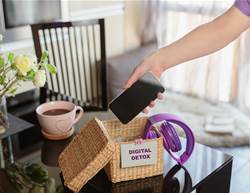Kegels are often recommended to strengthen the pelvic floor. These muscles support the uterus, bladder, small intestine and rectum and can weaken with pregnancy, childbirth or surgery, as well as ageing, higher body weight or chronic straining to pass a bowel movement.
When pelvic floor strength declines, symptoms can include more frequent bathroom visits, constipation, painful urination and incontinence. For some, traditional Kegels are not enough—much like adding resistance in the gym, extra support may be needed. So, do pelvic floor strengtheners work?
The need for additional help is not unfounded. While Kegels are a standard therapy for pelvic floor dysfunction, many people do not perform them correctly. Instead of activating the right muscles, they may simply squeeze and release surrounding areas, then wait for results that never arrive.
Below, experts outline which pelvic floor strengthening devices may help, who they suit and when to seek tailored care from pelvic floor physiotherapists.
Intravaginal Biofeedback Devices
What they are: Soft, medical-grade silicone devices that sit in the vagina and connect to a smartphone app. The app guides a squeeze-and-release regimen, sometimes with game-style prompts, while internal sensors detect contraction strength and relaxation to track technique and progress over time.
What we know: Early studies in people with urinary incontinence are promising. In one trial, those who paired pelvic floor muscle training with a device reported fewer leakage episodes and better quality of life than those doing exercises without feedback. Outcomes still depend on correct use, consistent practice and the underlying issue being treated.
Should you try them? Yes, with clinical guidance. See a gynaecologist, pelvic floor physiotherapist or suitably trained occupational therapist first to assess whether your muscles are underactive or overactive and to set the right plan. Unsupervised strengthening can aggravate overactivity or pain. Avoid use with active vaginal infection, immediately after surgery or if advised against during pregnancy or postpartum. Follow hygiene instructions, start with short sessions, focus on full relaxation between contractions and reassess progress after 8–12 weeks.
Electrostimulation Devices
What they are: Handheld vaginal wands that deliver gentle electrical stimulation to prompt pelvic floor muscle contractions. Some models also provide biofeedback so you can see when muscles are contracting and relaxing.
What we know: Electrostimulation can be useful for markedly weak or poorly recruiting pelvic floor muscles, especially when paired with supervised pelvic floor muscle training. Emerging research suggests that combining targeted exercises with electrical stimulation can improve bladder control and sexual function more than exercises alone for some people. However, technique matters: incorrect settings or placement can be uncomfortable or painful and benefits depend on an appropriate diagnosis and a consistent plan.
Should you try them? Maybe, with professional guidance first. See a pelvic floor physiotherapist or gynaecologist to confirm whether your symptoms stem from underactivity, overactivity or coordination problems. The same leakage or urgency can have different causes and strengthening the wrong way can worsen pain or urgency. A single assessment can tailor intensity, session length and frequency and advise when to avoid stimulation (for example, with a pacemaker or implanted defibrillator, during pregnancy unless cleared, with active pelvic infection, unexplained bleeding or recent pelvic surgery).
If you and your clinician decide to proceed, start on the lowest comfortable intensity, limit early sessions to a few minutes, allow full relaxation between pulses and review progress after 8–12 weeks.
Kegel Exercise Weights
What they are: Smooth round, oval or cone-shaped devices inserted into the vagina. They can slip out unless you contract, so they provide external resistance to help train pelvic floor muscles.
What we know: A 2022 review in the International Journal of Health Sciencesfound vaginal weights can improve pelvic floor dysfunction but are not significantly more effective than weight-free pelvic floor exercises, bladder retraining or electrical stimulation.
Should you try them? Not unless a pelvic floor physiotherapist or doctor recommends them. If advised, choose a medical-grade silicone weight, use short holds of up to about one minute per repetition and focus on full relaxation and deep breathing between efforts. Prolonged holds can create muscle tension or aggravate overactivity rather than help. Weights are most effective as part of a broader, individualised plan, so follow your clinician’s guidance on dosage, hygiene and when to stop.









